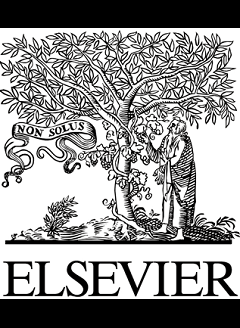دانلود رایگان مقاله پیش بینی تراکم لرزه ای ماسه اشباع با توجه به ویژگی های حرکت زمین و نفوذپذیری متغیر – سال 2020


مشخصات مقاله:
عنوان فارسی مقاله:
پیش بینی تراکم لرزه ای ماسه اشباع با توجه به ویژگی های حرکت زمین و نفوذپذیری متغیر
عنوان انگلیسی مقاله:
Prediction of seismic compression of saturated sand considering the ground motion characteristics and variable permeability
کلمات کلیدی مقاله:
ضریب نفوذپذیری، ویژگی های حرکات لرزه ای، فشرده سازی لرزه ای ماسه اشباع، چگالی نسبی، OpenSee، تحلیل عددی
کلمات کلیدی انگلیسی:
Permeability coefficient – Seismic motion characteristics – Seismic compression of saturated sand – Relative density – OpenSees – Numerical analysis
مناسب برای رشته های دانشگاهی زیر:
مهندسی عمران
مناسب برای گرایش های دانشگاهی زیر:
زلزله، ژئوتکنیک
وضعیت مقاله انگلیسی و ترجمه:
مقاله انگلیسی را میتوانید به صورت رایگان با فرمت PDF با کلیک بر روی دکمه آبی، دانلود نمایید. برای ثبت سفارش ترجمه نیز روی دکلمه قرمز رنگ کلیک نمایید. سفارش ترجمه نیازمند زمان بوده و ترجمه این مقاله آماده نمیباشد و پس از اتمام ترجمه، فایل ورد تایپ شده قابل دانلود خواهد بود.
فهرست مطالب:
Abstract
Keywords
1. Introduction
2. Constitutive model
3. Modification of model parameters and validation of centrifuge test
3.1. Permeability coefficient model
3.2. Centrifuge model test
3.3. Modification of permeability coefficient
3.4. Calculation result verification
4. Results and analysis
4.1. Effect of input ground motion dimension on seismic compression
4.2. Effect of ground motion directionality on seismic compression
4.3. Correlation analysis of IM and seismic compression
5. Conclusions
Declaration of competing interest
Acknowledgments
Appendix A. Supplementary data
Notation
Research Data
References
قسمتی از مقاله انگلیسی:
1. Introduction
Liquefaction of saturated sand is a common phenomenon in earthquakes, which often leads to lateral deformation, seismic compression and sand boils. Seismic compression of saturated sandy deposits was observed in almost all strong earthquakes. For horizontal free-field sand sites, seismic compression is mainly caused by volumetric strain, and results in ground settlement. Numerical simulation and laboratory tests are widely used to study the deformation of saturated sand during earthquake loading. However, it is found that the seismic compression of saturated sand determined through numerical simulation is smaller than that of field observations and model tests [1,2]. This is the result of failure to capture the complex behaviors of liquefaction of saturated sands using the current constitutive model in the numerical simulation (e.g., Andrianopoulos et al. [1], Elgamal et al. [3], Boulanger et al. [4], Zhang et al. [5]). As a matter of fact, this phenomenon can be theoretically explained by the settlement mechanism of saturated sand. Jafarzadeh and Yanagisawa [6] conducted a series of unidirectional shaking table tests to study the settlement of saturated sand columns in various conditions, and they found that the average permeability coefficient during seismic excitation is 5–6 times greater than its static (pre-shaking) value. Arulanandan and Sybico [7] attributed the increase of the permeability coefficient of saturated sands in liquefaction state to the changes of particle fabric. The contacts between soil particles are weaken during liquefaction, which results in more flow channels for the pore water and leads to the increase of permeability coefficient of the sand. Shahir et al. [8] found that the generation and seepage of excess pore water pressure exist simultaneously under seismic loads, and the coupling of accumulation and dissipation of pore pressure affects the seismic compression of saturated sand. Later, it is found that a variable permeability model used to simulate the centrifuge test can obtain more accurate results [9].


